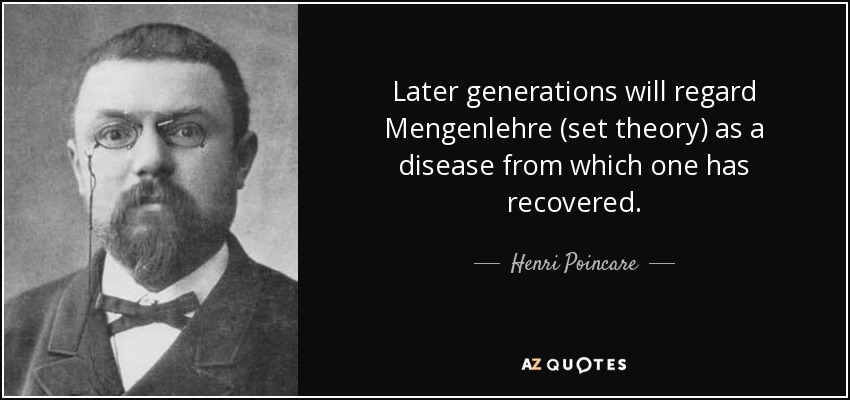George Cantor did ground breaking but controversial work on the nature of infinity itself. Up until his time, mathematicians were hoping that they would only have to deal with "potential" infinity such as was as used in the limit concept in calculus. But Cantor's amazing results opened a world of different kinds of infinity, and paradoxically of different sizes!
Cantor's Infinity Paradox | Set Theory
Cantor's results often seemed paradoxical, but his logic seemed simple and impeccable.
Set theory was so powerful and elemental that it seemed it could be used freely and completely without any risk of logical error or confusion, but then some paradoxes crept in, deep in the very heart of set theory, that it would be dangerous to ignore, and which eventually expelled many a mathematician from this paradise and plunged them into a purgatory of uncertainty and even madness.
The great French mathematician Henri Poincare put it this way:
Gottlob Frege was the first to write a monumental work setting mathematics upon a foundation of logic and set theory. Unfortunately, just as he was completing this work, a young British mathematician and logician named Bertrand Russell wrote to him about a paradox that undermined the very foundations of his work:
The paradox is now known as Russell's Paradox and has a popular version called the Barber Paradox, but Russell essentially suffered the same experience as Frege of seeing the foundations of his own monumental work Principia Mathematica fall away when Kurt Godel published his paper entitled:
On Formally Undecidable Propositions of Principia Mathematica and Related Systems
Watch a concise and entertaining account of the whole fascinating story and decide for yourself about undecidability:
There is even an entertaining graphic novel that covers this story from Frege to Godel:
There is also a fascinating video series on the making of this ground breaking graphic novel:
So in the end mathematics narrowly escaped being identified with logic and now flies strong and free, but without the firm foundation that logic and set theory could have provided.
Diminic Walliman has created a wonderful Map of Mathematics and a video to go with it:
And here is a more humorous map of Mathematics:
 |
| “Mathematistan” by Martin Kuppe. This detailed map of the landscape of mathematics was designed by Martin Kuppe |












No comments:
Post a Comment
Note: Only a member of this blog may post a comment.